The celebrated Mr. K enjoys a Thanksgiving feast!
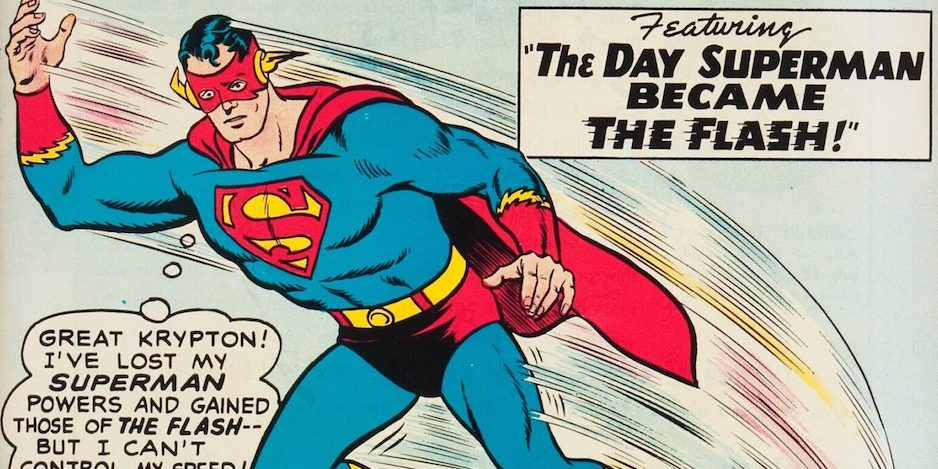
By PAUL KUPPERBERG
Happy Thanksgiving!
Among the many things I’m thankful for this year is that I was able to narrow down from the many, many, many thousands of comic books I’ve read to a list of just 13 I’m thankful for. Admittedly, I have the same difficulty with just about every 13th Dimension column I write. Winnowing dozens or hundreds or thousands of selections down to a mere 13 “best” or “favorites” is an impossible and totally artificial task, and no matter what I select, the response is always going to be, “Those are great, but what about [fill-in the blank]?”
To narrow the field a bit, I’m sticking to comics from my decade of comic book discovery — the 1960s — that hold some special significance for me, books whose acquisition or first time reading made everlasting impressions and were instrumental in my developing love and understanding of the medium. While I was a DC Comics first fan, I read as many titles as I could buy, swap, or borrow from all the publishers. I turned 10 years old in 1965, a particularly piquant era for budding comic book readers. Batman ’66 had made superhero comics briefly cool again and publishers were jumping on the bandwagon.
Charlton had their “Action Heroes,” Archie resurrected their Golden Age supers as “Pop Art Heroes,” Dell, Harvey, and Gold Key tested out the superhero and supernatural hero character waters, and newbies like Tower Comics (T.H.U.N.D.E.R. Agents) and Lightning Comics (Fatman the Human Flying Saucer, by Captain Marvel creator C.C. Beck, and Super Green Beret) were trying to grab their slice of the superhero craze. And, early on in my 1960s memories, this new company called Marvel Comics appeared and unleashed a tidal wave of new heroes on the marketplace.
I no longer own oodles of comics, just a couple of shelves of 80-Page Giants, 100-Page Super-Spectaculars, and a few dozen random issues that have special meaning to me, not necessarily for being landmarks or keys, but because of the memories they can still evoke. Ten of the 13 titles below are still on my shelf and probably always will be.
So, happy Thanksgiving, don’t overdo the acorn dressing or family, and think about, or better yet, reread, some of the comics you’re thankful for!
Here then, 13 COMIC BOOKS I’M THANKFUL FOR:
—
Secret Origins #1 (Summer 1961), DC. This 80-Page Giant was the Rosetta Stone of DC Comics for me! I didn’t see a copy of it until 1965, after I’d been accumulating random comics (all DC… or National Periodical Publications as it was then known) for a couple of years. While I kinda-sorta knew the origins of Superman and Batman, I’d been following Martian Manhunter, first as a back-up in Detective Comics, then as the cover feature in House of Mystery) for almost a year without knowing his back story. A few of the other characters featured were familiar from Justice League of America, but Adam Strange and the Challengers of the Unknown were new to me and made me hunger to read more. I don’t exaggerate when I call Secret Origins #1 one of the most important comic books of the decade.
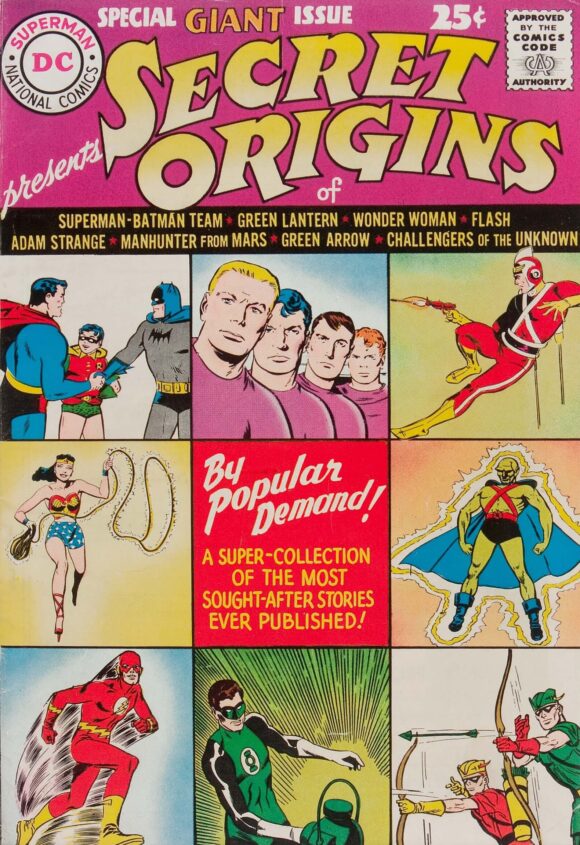
—
Dennis the Menace Television Special #1 (Summer 1961), Hallden Fawcett. I don’t remember if I was aware of Dennis from the Hank Ketchum newspaper panel, but I’m pretty sure I knew the character from the Dennis the Menace TV series (1959-1963) before I ever saw an issue of any of the giant-sized Standard/Pines/Fawcett Dennis Giant Specials. Mostly by writer Fred Toole and artist Al Wiseman, these early Dennis stories were actually early graphic novels, each built around a theme: The Dennis the Menace Giant Vacation Special, Dennis the Menace Giant Christmas Issue, Dennis in Hawaii, Dennis in Mexico, Dennis in Hollywood, etc. These were meticulously researched stories, involving real places and, often, real people, the early issues clocking in at a bodacious 100 pages before making the inevitable march down to 80, then 68 pages by 1969 to retain their 25¢ cover price. Whatever the page count, these Dennis the Menace Specials are well worth hunting down.
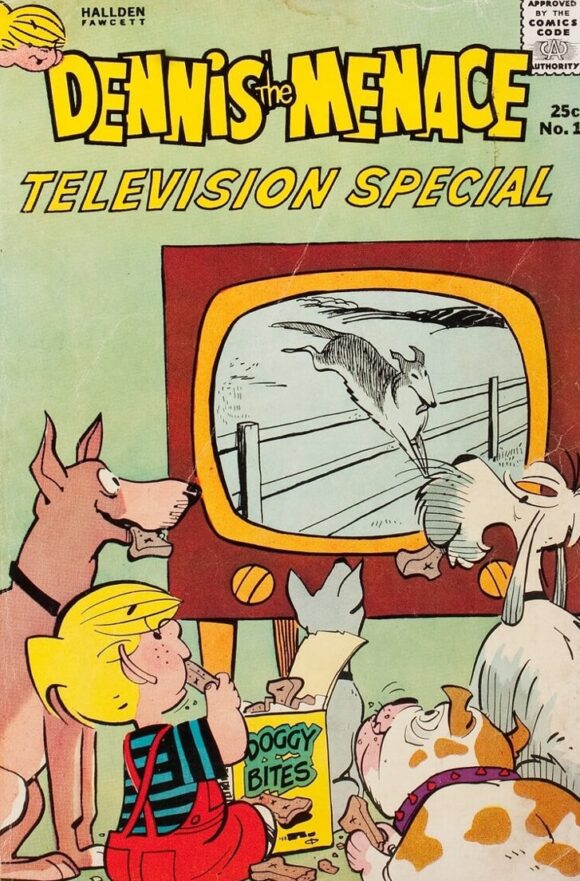
—
Hanna-Barbera The Flintstones at the New York World’s Fair (1964), Warren. The New York World’s Fair and a comic book? It was great day, when I was taken by my grandmother and Aunt Nettie to this incredible spectacular in Queens by subway from our Brooklyn home. I was 8 years old and I recall the experience more for its overwhelming size and sounds than any specific sights, but I remember when I saw that comic book, a World’s Fair comic book… a World’s Fair comic book starring the Flintstones… I had to have it and fortunately, my Nanny Anne was a soft touch and for 25¢ she had one very happy grandson. P.S.: The comic, by Pete Alvarado, Steve Steele, Phil DeLara, and others, was published by none other than James Warren, who would soon bring the black-and-white horror mags Creepy and Eerie to market. Yabba-dabba-Jim!
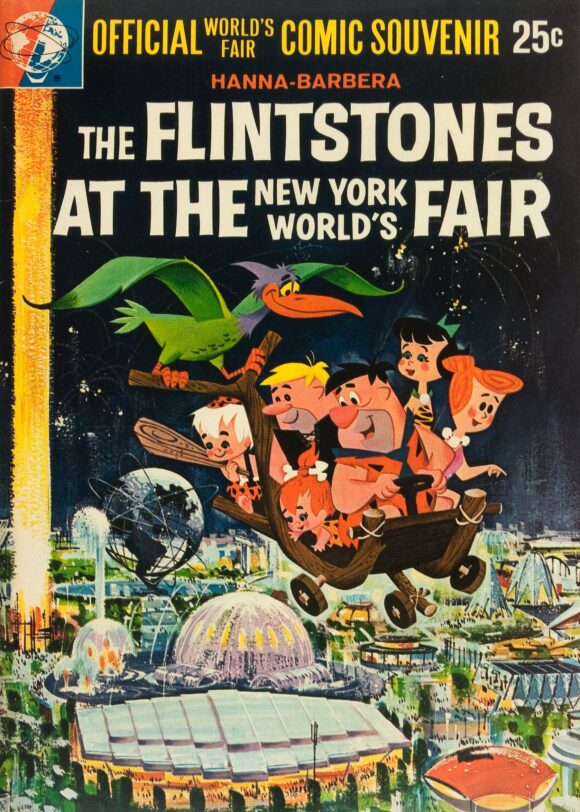
—
Detective Comics #324 (February 1964), DC. A truly terrible, pointless Batman story, “Menace of the Robot Brain” by Dave Wood, Sheldon Moldoff, and Charles Paris, nonetheless produced a cover intriguing enough to make 8-year old me leap for it on the newsstand in a Foster Avenue candy store. But beyond the cover, this comic book, the first Batman comic I ever bought, introduced me to back-up feature hero, J’onn J’onzz, Martian Manhunter in “The Beast Who Was J’onn J’onzz,” by Jack Miller and Joe Certa. Like the lead, the story itself was pretty lame and nothing to get excited about, but that didn’t keep me from seeing how great Manhunter was, a character who possess all the powers and abilities of Superman… plus invisibility and intangibility and mindreading and shapeshifting.

—
World’s Finest #142 (June 1964), DC. I ain’t gonna lie to you. “The Composite Superman!” by Edmond Hamilton, Curt Swan, and George Klein was a killer concept wrapped in a yawn: A guy who resents Superman is struck by lightning that gives him the combined powers of the Legion of Super-Heroes that he uses to fight Superman. He’s about to reveal Superman and Batman’s secret identities when his powers fade away and he forgets. The end. But, man, that Superman/Batman androgynous costume and the visuals of Composite-Supes using the powers of the Legionnaires was awesome and I couldn’t reread this story too many times.
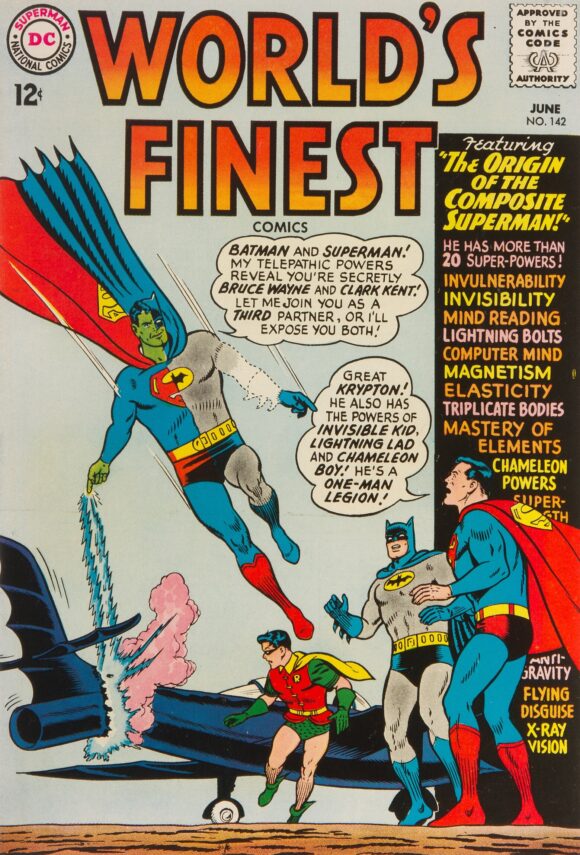
—
Action Comics #314 (July 1964), DC. “The Day Superman Became the Flash,” by Hamilton and Al Plastino is another comic I read to tatters. In it, Superman is summoned by the JLA to show him an artifact Aquaman’s octopus pal Topo found: a video presentation by none other than Superman’s daddy Jor-El showing what would now be AI simulations of baby Kal-El’s possible futures depending on which planet the baby was sent to. The different lives are concocted by the Kryptonian Computer Forecaster: on one, a world of giants, he’s tiny, like the Atom; on a water world he becomes an Aquaman; on a planet with primitive technology and a red sun he becomes a Green Arrow; on a twilight world he becomes a Batman; and on another, he becomes the Flash. But none of the forecasts show him finding happiness on any world except Earth! Mind-bending stuff. Six Elseworlds stories for the price of one!
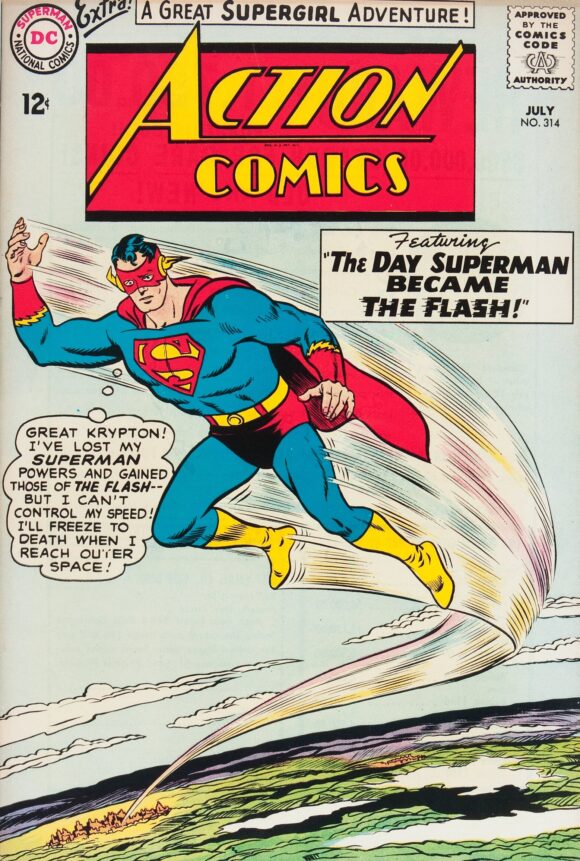
—
The Fantastic Four Annual #3 (1965), Marvel. “The Wedding of Reed and Sue,” guest-starring the entire Marvel Universe in a 72-page extravagance by Stan Lee, Jack Kirby, Mike Esposito, Dick Ayers, et al? ‘Nuff said, True Believers!
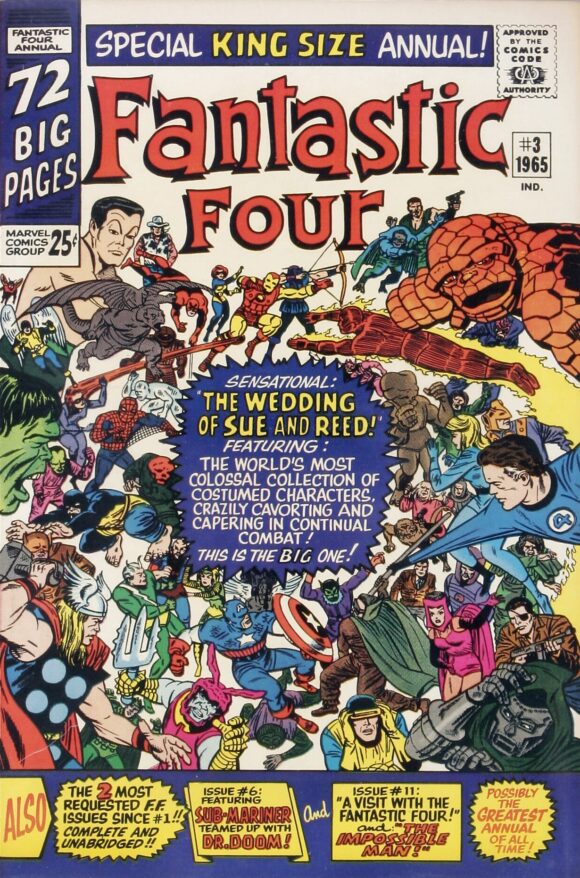
—
Superman #164 (October 1965), DC. Few stories of the time ever went beyond two-dimensional characterizations but “The Showdown Between Luthor and Superman,” by Hamilton, Swan, and Klein was a rare exception. Luthor escapes prison and flees to a planet under a red sun, where he challenges Superman to meet him in a fair fight. Superman accepts, beats Luthor in fisticuffs, then the two of them meet the ragged remains of the planet’s civilization, to whom Luthor becomes a hero by helping them drive off some alien invaders and searching for much-needed water. When it becomes clear that there’s no water to be found, Luthor throws another fight with Superman so the Man of Steel, who the natives already regard as a villain, could haul him back to Earth rather than disappoint these people, who name the planet Lexor in his honor. Once they get back under our yellow sun Luthor asks the now repowered Superman to throw a few massive mountains of ice to Lexor to create a lifesaving reservoir, which they credit to Luthor.
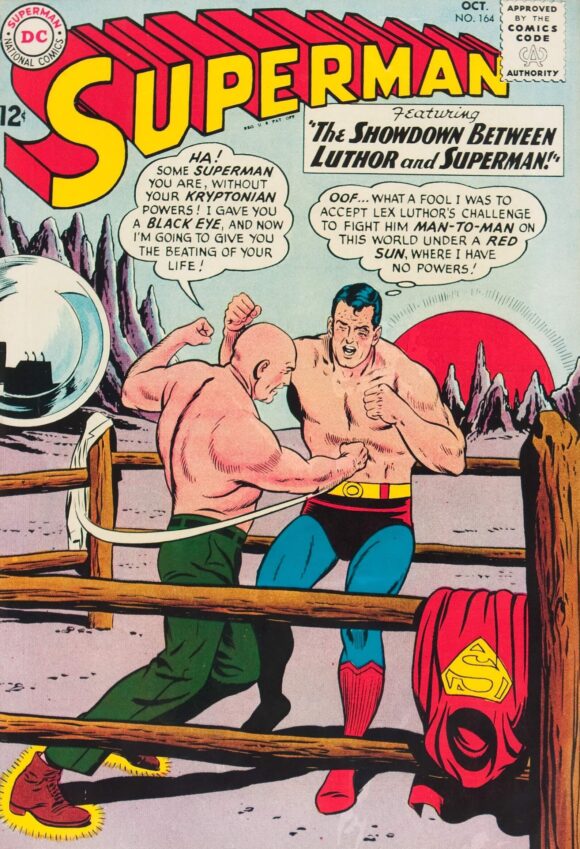
—
The Spirit #1 (October 1966). I was introduced to the Spirit in Jules Feiffer’s The Great Comic Book Heroes, the hardcover analogue to the Secret Origins 80-Page Giant in terms of importance to my development as a fan, but this 64-page giant reprint comic (the first of, alas, only two issues) licensed to Harvey Comics by Will Eisner was my first full-on exposure to the classic strip.
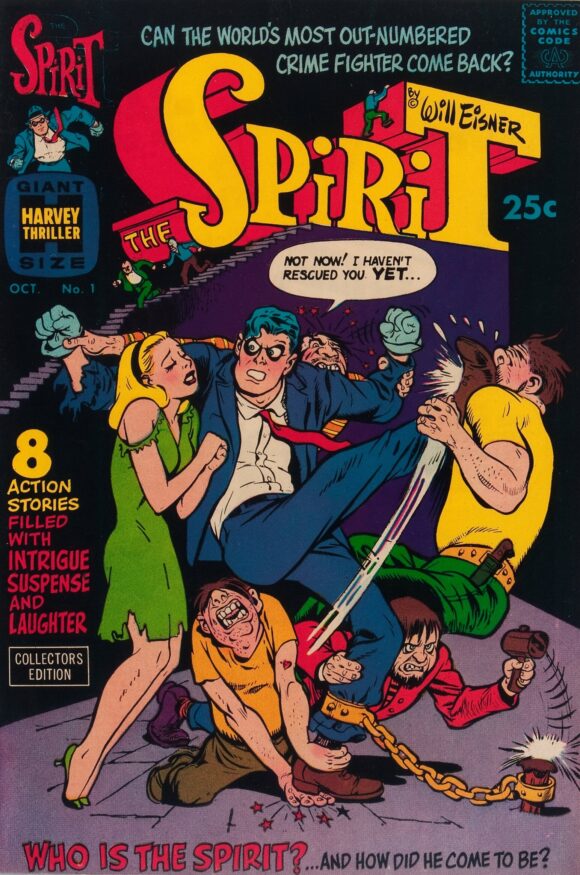
—
Super Heroes #1 (January 1967), Dell. Don’t ask me why, but I loved this short-lived, four-issue series from Dell Comics with art by Sal Trapani. Four teenagers find themselves able to transfer their minds into four super-powered androids that they use to fight ridiculous villains and threats after an accident at the nuclear facility next door to the science museum where the androids are on display. This is seriously, seriously bad comics, but the heart wants what the heart wants, even if my heart wanted a comic that was so bad no writer has ever stepped forward to claim credit for the stories.
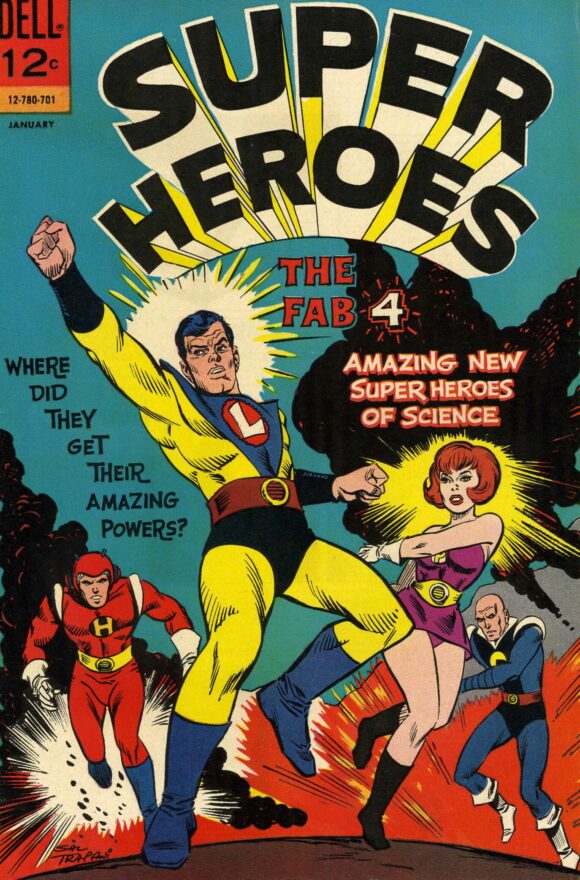
—
His Name is Savage #1 (June 1968), Adventure House. Gil Kane put his money where his mouth was, self-publishing this adult-themed, black-and-white magazine format adventure story, assisted by writer Archie Goodwin. Three years before Dirty Harry, Savage was a hardcore hard guy, jamming the barrel of his revolver into his opponent’s mouths through their teeth in “The Return of the Half-Man,” a science fiction spy thriller about a cyborg renegade retired general who kidnaps the president and impersonates him at a United Nations assembly to try and ignite a world war. Plagued by problems with printers and distribution, Gil’s planned ongoing series never went beyond that one issue.
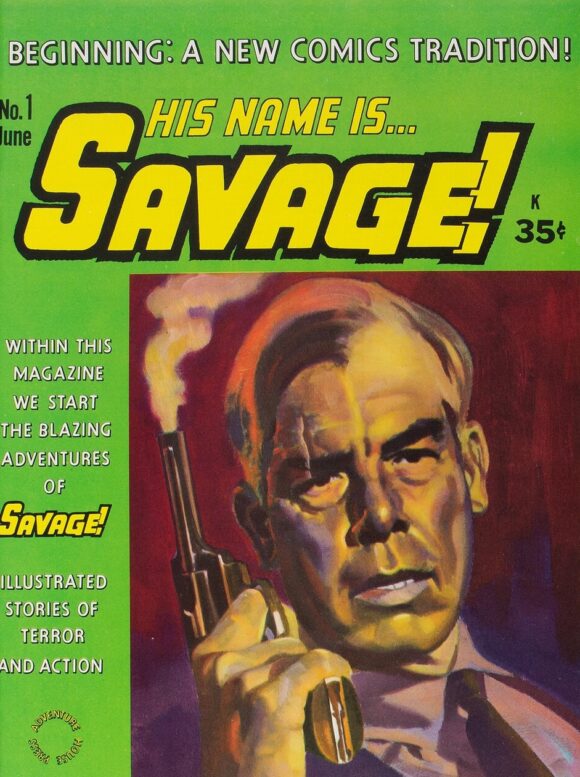
—
Harvey Pop Comics: The Cowsills #1 (October 1968), Harvey. They were a pretty hot family rock band, the model for TV’s The Partridge Family (only with abuse, mental illness, and heartbreak) that had a few years of recording success. I know this is a time for remembrance but most of all don’t look back if you’re in need of a friend even though I love the flower girl in the rain, the park, and other things! This is another “Don’t ask me why” comic, but I had a thing for this Don Selig and Ernie Colon production.
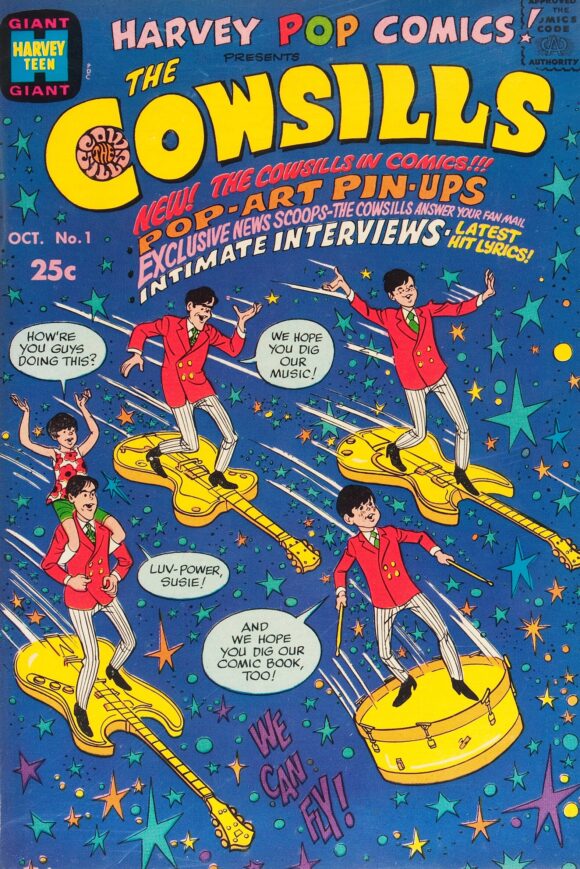
—
Hercules #8 (December 1968), Charlton. Charlton Comics’ ongoing Hercules series was a pretty straightforward telling of the 12 labors of the mythic man-god with competent scripts by Joe Gill and the usual above average art of Sam Glanzman. I suppose the Derby, Connecticut, publisher wanted to test the black-and-white magazine market for comics (they were already publishing other magazines, including Hit Parader and Song Hits, as well as paperback books under several imprints) and put together this square-bound, 64-pager reprinting two earlier Hercules stories and three chapters of the back-up feature, the medieval strip “The Thane of Bagarth” by Steve Skeates and Jim Aparo.
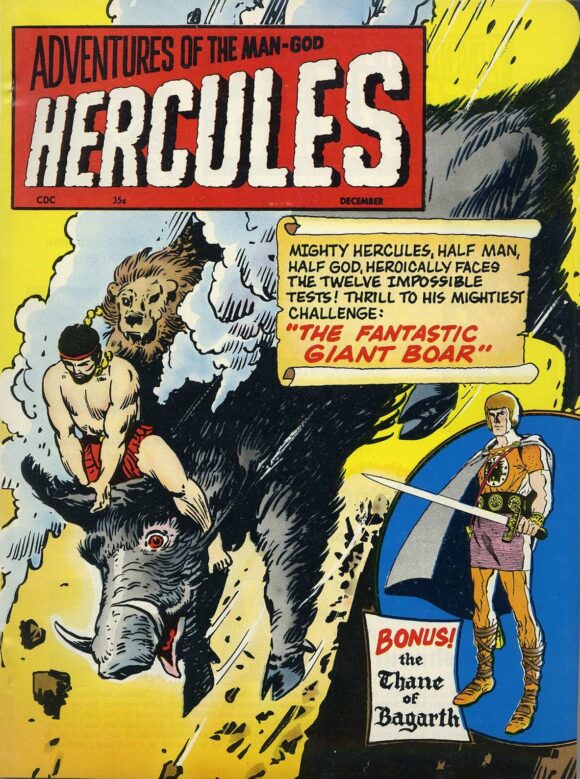
—
MORE
— PAUL KUPPERBERG: My 13 Favorite Classic Comic Book Turkeys. Click here.
— 13 Times Comics Characters Soared in the MACY’S THANKSGIVING DAY PARADE. Click here.
—
PAUL KUPPERBERG was a Silver Age fan who grew up to become a Bronze Age comic book creator, writer of Superman, the Doom Patrol, and Green Lantern, creator of Arion Lord of Atlantis, Checkmate, and Takion, and slayer of Aquababy, Archie, and Vigilante. He is the Harvey and Eisner Award nominated writer of Archie Comics’ Life with Archie, and his YA novel Kevin was nominated for a GLAAD media award and won a Scribe Award from the IAMTW. He also wrote an essay for DC’s Aquaman: 80 Years of the King of the Seven Seas. Check out his new memoir, Panel by Panel: My Comic Book Life.
Website: https://www.paulkupperberg.net/
Shop: https://www.paulkupperberg.net/shop-1
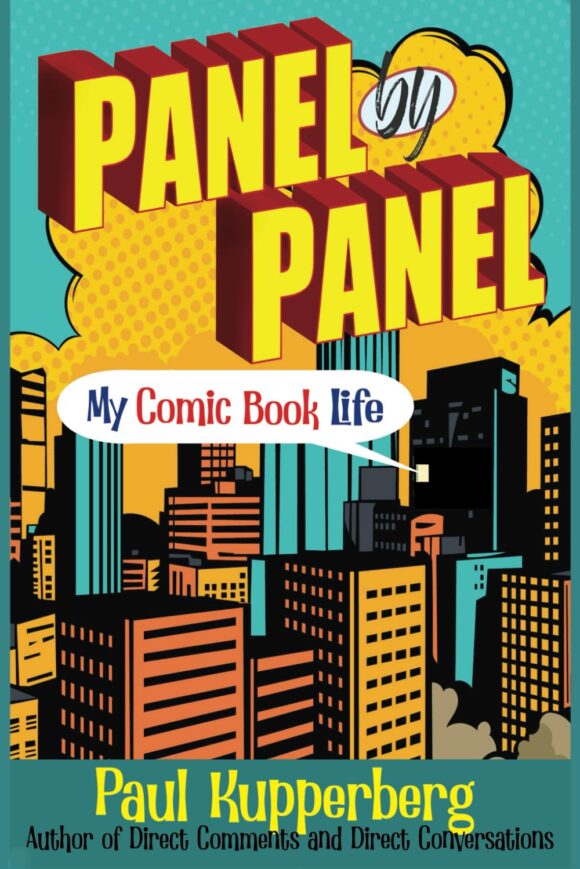

November 28, 2024
Paul! Lots of good choices here but my favs are Composite Superman (of course) AND The Day Superman became The Flash! I LOVE hybrid costumes!
November 28, 2024
I’d put the Composite Superman up there in my list of “13 Must Haves of the Silver Age”.
Happy Thanksgiving, Walt, Jim, Paul, Dan and everyone who makes this a must visit/read every morning!
November 28, 2024
Oh, that was fun! And I really wish I had those 80-pagers!
November 28, 2024
The only one of these I vividly remember comic-book-wise is the Composite Superman.
But I will say Savage has a strong resemblance to actor Lee Marvin (1924 – 1987) of The Dirty Dozen fame**, which came in 1967. The cover date here, June 1968, suggests a visual influence.
Had no idea that the Cowsills had a comic book–but they certainly did great music: Their title track to the rock musical Hair! is just stupendous. Much remember vigorously moving to that as a kid.
**which Bob Haney memorably “parodied” or “homaged” in a Batman/Spectre B&B (# 116; Jan. 1975)–the Dirty Dozers (ugh!), a WW 2 road-building crew, whose war efforts bulldozed over an occult cemetery leading to the Spectre’s needed intervention. Zany Bob Haney–gotta love him (the Jim Aparo art was fantastic as always).
Happy Thanksgiving all! Appreciate the efforts here at 13th Dimension.
November 28, 2024
Your Cowsills song references are on point! And that is indeed one groovy comic mag.
November 28, 2024
I always get Mandela Effect-ed by that Flinstones World’s Fair issue. I always think it’s a Dell issue, but nope. That James Warren was behind it makes it even more of a treat.
November 30, 2024
Great Krypton! Great choices, Paul!